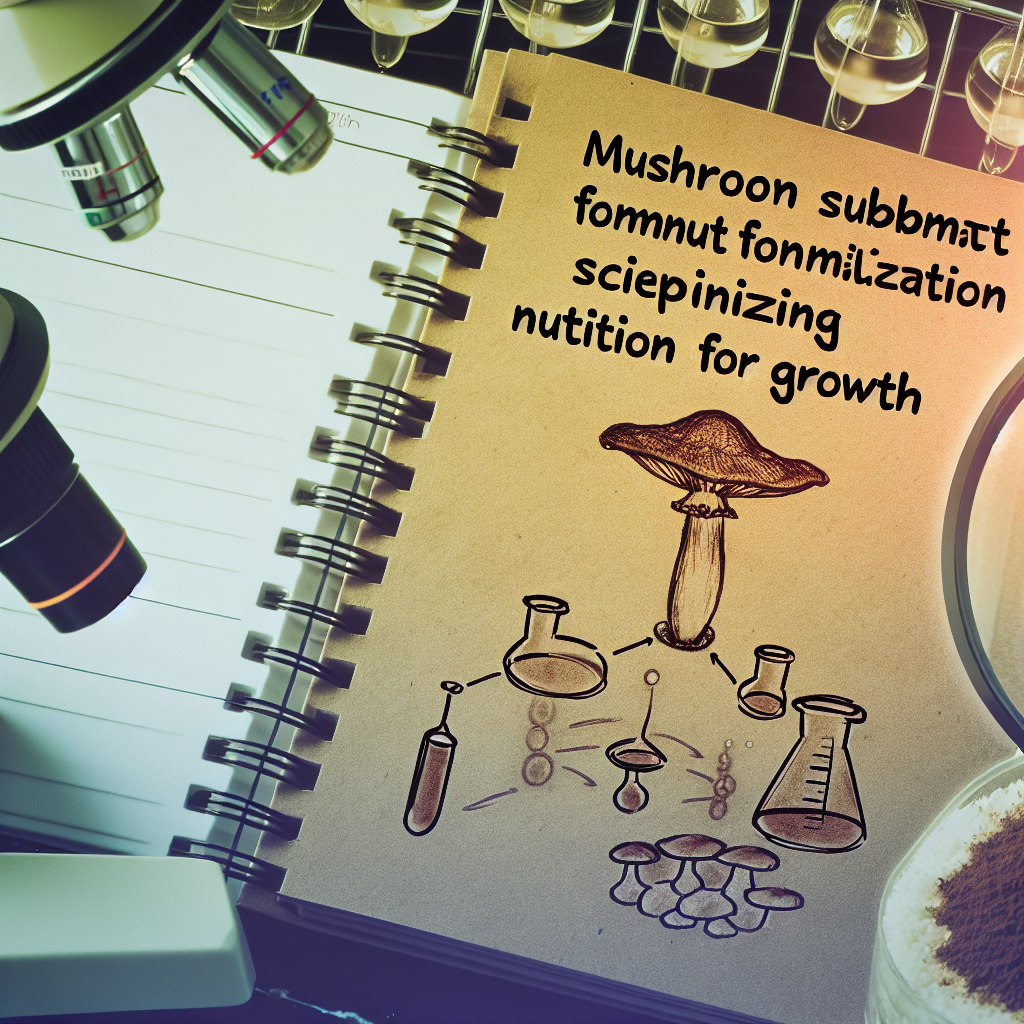Mushroom Substrate Formulation Science: Optimizing Nutrition for Growth
Introduction
With the rising popularity of medical and therapeutic mushrooms, optimizing the way they are grown has become just as important as studying their health benefits. Substrate formulation—the process of preparing the nutrient environment that mushrooms grow in—plays a pivotal role in maximizing both yield and potency. As science uncovers more about the complex nutritional needs of fungi, growers are increasingly turning to precision-based substrate formulations for enhancing **growth efficiency**, maximizing active compound levels (like psilocybin and beta-glucans), and supporting bioactivity for medical and wellness applications.
Mushrooms, whether cultivated for **culinary**, **therapeutic**, or **scientific** purposes, are highly sensitive to their environments. Unlike plants, fungi absorb most of their nutrients directly from the substances they grow on, known as substrates. These substrates must be rich in **carbon and nitrogen**, and must also offer the proper balance of **minerals**, **moisture content**, and **pH** to support healthy mycelial colonization and robust fruiting body development.
When it comes to medicinal mushrooms—such as Psilocybe cubensis, Lion’s Mane (Hericium erinaceus), and Reishi (Ganoderma lucidum)—the type and quality of the growing substrate significantly impact their **biomass output** and **pharmacological potency**. Skilfully composed substrates can lead to higher concentrations of active compounds like **hericenones**, **erinacines**, and **psilocin**, which are directly correlated with a mushroom’s therapeutic value.
Substrate tailoring involves a scientific approach that goes well beyond choosing between straw and sawdust. It includes adding agricultural waste like **wheat bran**, **coffee grounds**, and **soybean hulls**, and leveraging processes like fermentation and mineral enrichment. For mushrooms such as Psilocybe cubensis, optimal substrate design can even enhance **psilocybin content**, allowing the substrate itself to directly influence the quality of therapeutic outcomes.
Within regenerative agriculture and research-focused cultivation circles, there is growing interest in combining substrate science with organic and sustainable practices. Precisely engineered substrates are crucial for clinical applications, extraction processes, and standardizing results in commercial product lines. Growers, researchers, and health professionals are now embracing data-informed substrate design to improve mushroom-based interventions.
Understanding how substrate formulation influences nutrient uptake, different stages of growth, and the synthesis of bioactive compounds is critical for everyone involved in the mushroom industry—from cultivators to clinicians.
Features and Scientific Insights
Recent discoveries in both universities and mycological research labs show that mushroom substrate formulation directly affects not only yield but also the nutritional and bioactive profile of the fungi being grown. A pivotal 2019 study published in the Journal of Fungi showed that enriching substrates with nitrogen and lignin-rich materials—such as wheat bran added to hardwood sawdust—resulted in significantly higher **polysaccharide** production. These polysaccharides, including **beta-glucans**, are key compounds in the pharmaceutical profiles of medicinal mushrooms like Shiitake (Lentinula edodes) and Reishi.
When studying psilocybin-producing mushrooms such as Psilocybe cubensis, researchers found that substrates rich in **natural sugars**, **brown rice flour**, and **vermiculite** stimulated higher concentrations of **psilocybin** and **psilocin**. According to a 2021 study from the Journal of Psychoactive Drugs, controlled nutrient environments led not only to improved psilocybin levels but also to consistent chemical profiles across multiple flushes—a vital factor for therapeutic dosing reliability.
Advanced supplementation strategies have also emerged, using materials like **spent coffee grounds**, **yeast extracts**, and **soybean hulls**. These “designer substrates” are packed with trace minerals—like **zinc**, **magnesium**, and **potassium**—which enhance enzymatic activity and cellular signaling in the fungal mycelium. A comprehensive review in the journal Mycological Progress emphasized that mycelial systems dynamically respond to substrate complexity, demonstrating a form of biochemical feedback that cultivators can leverage to boost productivity and medicinal efficacy.
Today’s mushroom growers increasingly design **custom substrates** based on the intended product end-use. For example, Lion’s Mane mushrooms grown on enriched sawdust mixed with **oat bran** and **cereal waste** show elevated levels of neuroregenerative compounds like **erinacines** and **hericenones**. These compounds are highly sought after in the nootropic and adaptogen markets, making consistency and potency top priorities. Substrate engineering, in such cases, directly impacts cognitive performance supplements and functional food products.
Given the biological intricacies of fungal organisms, the traditional approach to substrates is being replaced by a more intentional, data-driven methodology. From Petri dish to product shelf, expert cultivators are tuning every growth input to maximize the final health outcome for consumers.
Conclusion
Optimizing mushroom substrates is no longer a mere operational concern—it is a cornerstone for both cultivation success and therapeutic effectiveness. By transforming substrate management from a traditional practice into a scientific discipline, mycologists and cultivators are revolutionizing the fungi industry. This allows for increased yields, uniform biomolecular profiles, and greater precision in health-focused applications. As medical mushroom use expands across fields from mental health to cognitive support, investing in innovative substrate formulation will be key to ensuring reliable, scalable, and potent results.
Concise Summary
Optimizing mushroom substrates is essential for both high-yield cultivation and therapeutic efficacy of medicinal species like Lion’s Mane, Reishi, and Psilocybe cubensis. Substrate nutrition—via scientific enrichment with materials such as wheat bran, brown rice flour, and coffee grounds—significantly boosts growth, bioactive compound production, and chemical consistency. Modern techniques allow tailored substrates to influence alkaloid levels, polysaccharide content, and therapeutic outcomes. With the rise of organic farming and functional mushrooms in medicine, substrate formulation has become a vital tool for growers and researchers aiming to produce high-quality mushroom-based products and standardized medicinal extracts.
References
– Journal of Fungi – Substrate Enrichment and Polysaccharide Yield in Medicinal Mushrooms
– Journal of Psychoactive Drugs – Influence of Substrate on Psilocybin Content in P. cubensis
– Mycological Progress – Fungal Response to Complex Nutrient Substrates

Dominic E. is a passionate filmmaker navigating the exciting intersection of art and science. By day, he delves into the complexities of the human body as a full-time medical writer, meticulously translating intricate medical concepts into accessible and engaging narratives. By night, he explores the boundless realm of cinematic storytelling, crafting narratives that evoke emotion and challenge perspectives. Film Student and Full-time Medical Writer for ContentVendor.com




